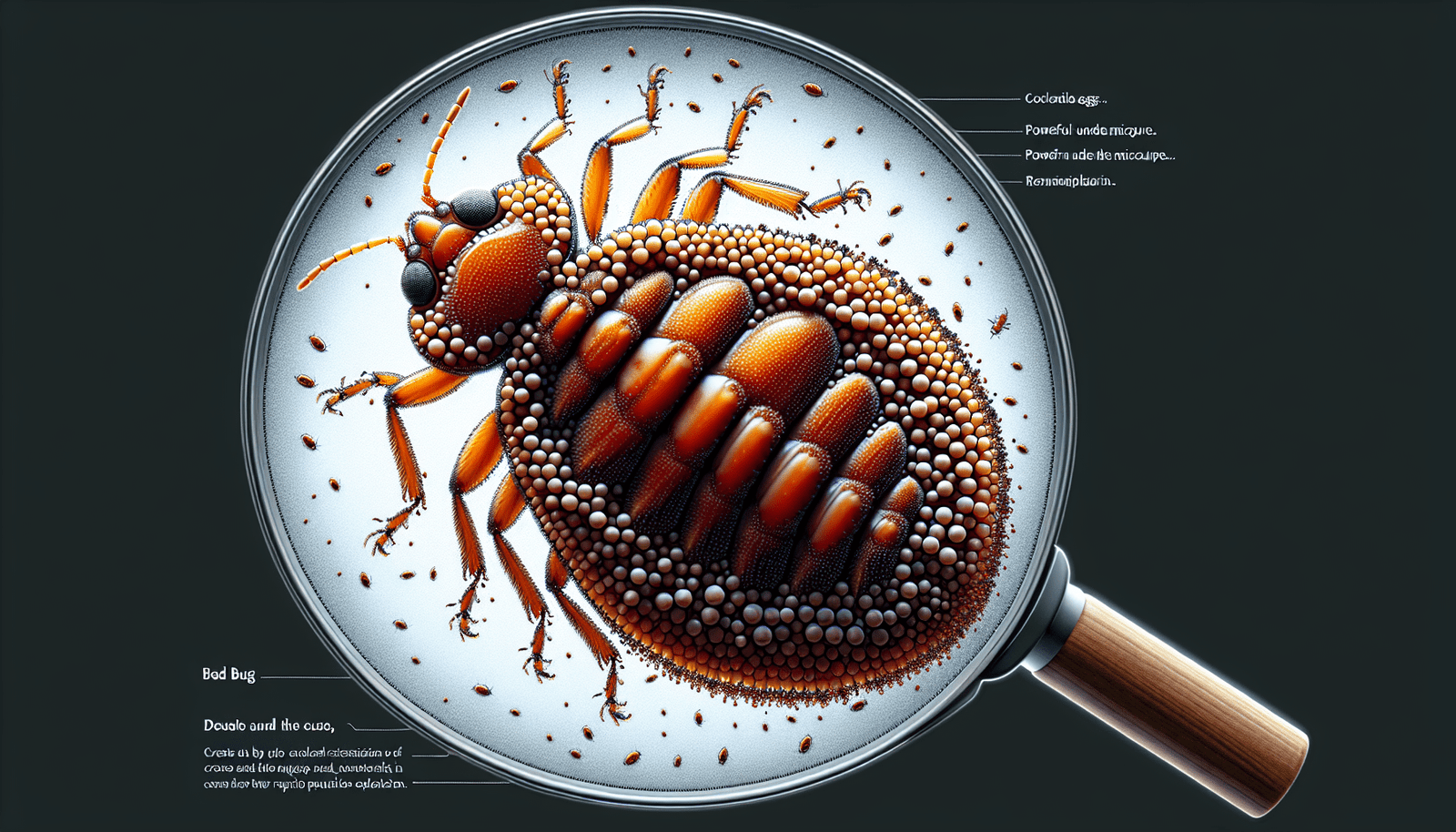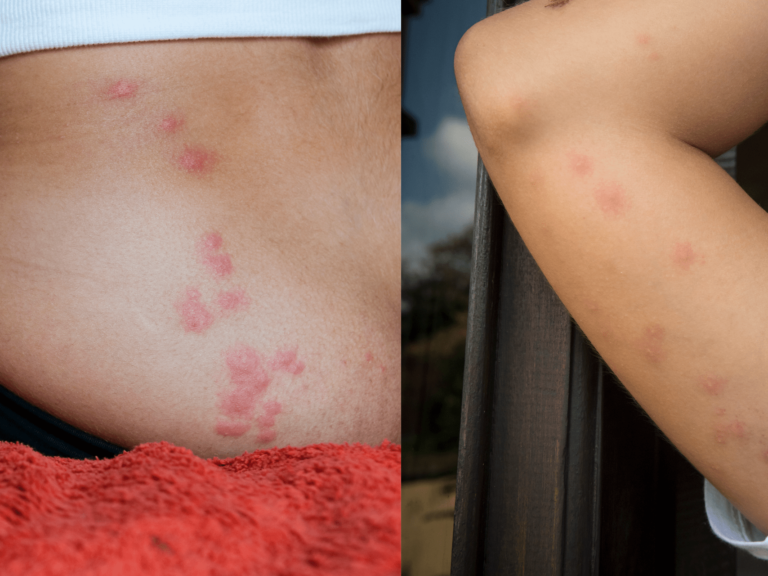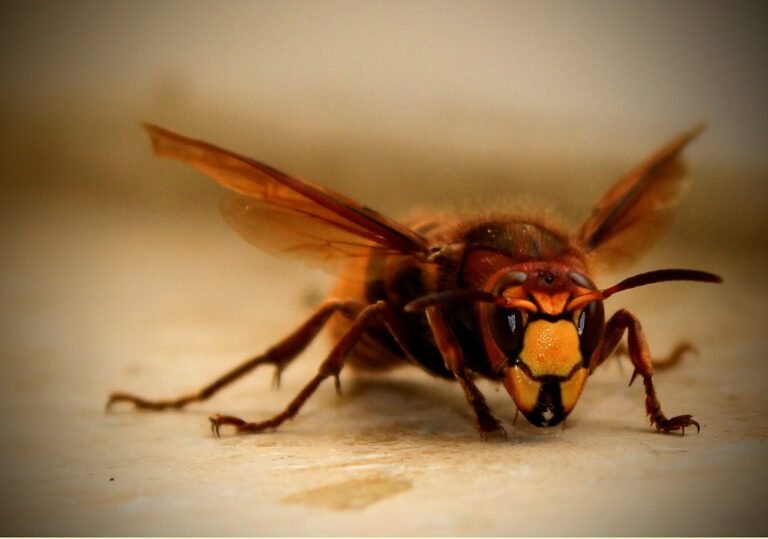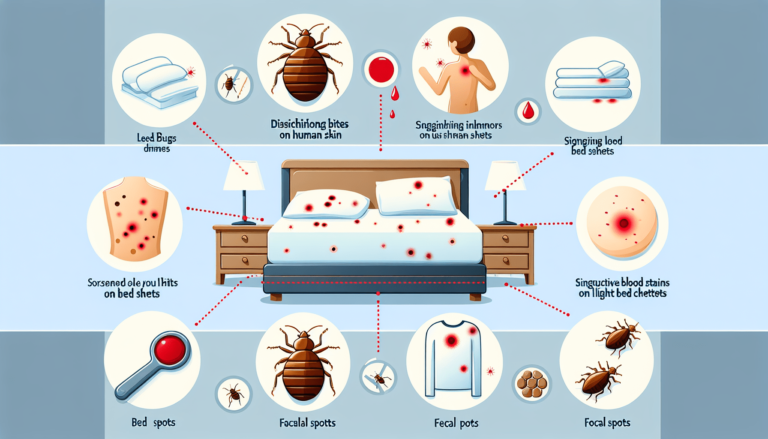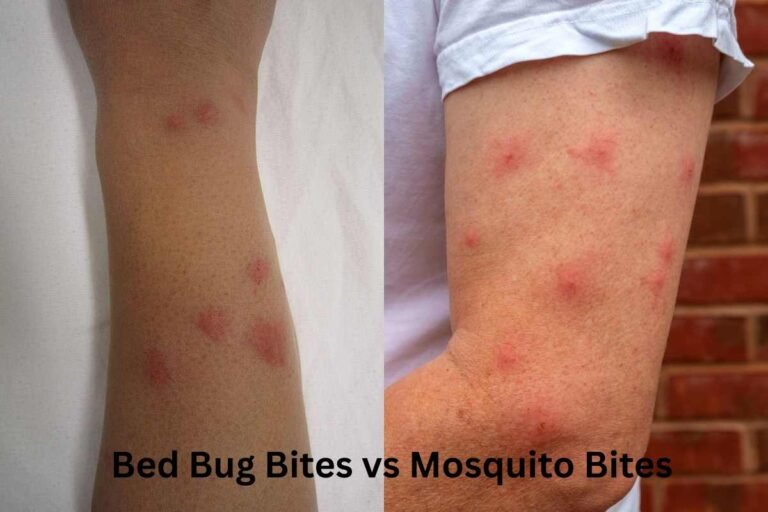How Fast Do Bed Bugs Multiply
If you’ve ever had the unfortunate experience of dealing with bed bugs, you know how important it is to get rid of them quickly. But just how fast do these pesky critters multiply? Well, the answer may surprise you. Bed bugs are notorious for their rapid reproduction rate, with females laying up to five eggs per day, or 200-500 eggs in their lifetime. These eggs hatch within 6-10 days, and the newly hatched nymphs can start feeding immediately. In ideal conditions, a population of bed bugs can double in size every 16 days. That means a few bugs can turn into an infestation in no time. So, if you’re dealing with bed bugs, it’s crucial to take action swiftly to prevent their numbers from multiplying exponentially.
Understanding the Life Cycle of Bed Bugs
Bed bugs are small, parasitic insects that feed on human blood. In order to effectively control and prevent infestations, it is important to understand the life cycle of these pests. The life cycle of a bed bug involves several stages, each with its own unique characteristics and duration.
Explanation of the Life Stages of Bed Bugs
The life cycle of a bed bug consists of five distinct stages: egg, nymph, adult, and the feeding stages of each. Bed bug eggs are tiny, measuring about 1mm in length, and are white in color. Nymphs are immature bed bugs that resemble adult bed bugs but are smaller in size and have not yet reached sexual maturity. The adult stage is characterized by fully developed reproductive organs and the ability to reproduce.
Duration of Each Life Stage
The duration of each life stage of a bed bug can vary depending on environmental factors such as temperature and access to food. On average, bed bug eggs take about 6 to 10 days to hatch. Nymphs go through five molting stages, taking about 5 to 8 weeks to reach adulthood. Adult bed bugs can live for several months to a year under favorable conditions.
Factors Influencing Bed Bug Development
The development and growth of bed bugs are influenced by various factors. Temperature plays a crucial role, with warmer temperatures accelerating their development. Bed bugs thrive in temperatures between 70 to 90 degrees Fahrenheit, and their development slows down or even halts in temperatures below 50 degrees Fahrenheit. Availability of a blood meal is another important factor, as bed bugs require regular feeding for growth and reproduction.
Bed Bug Reproduction
The Mating Process of Bed Bugs
Bed bugs reproduce through sexual reproduction, with males and females engaging in a courtship process before mating. During mating, the male bed bug pierces the female’s abdomen with his reproductive organ and transfers sperm into the female’s body. This process is known as traumatic insemination.
Female Bed Bug’s Egg Production
After mating, female bed bugs can produce eggs throughout their lifetime, with each female capable of laying hundreds of eggs. The eggs are usually laid in cracks and crevices near potential host areas, such as mattresses or furniture. The female bed bug uses a glue-like substance to attach the eggs to surfaces, ensuring their stability.
Influence of Mating on Female Bed Bug Lifespan
The mating process can have an impact on the lifespan of female bed bugs. Studies have shown that female bed bugs that have mated tend to live longer compared to those that have not mated. This may be due to the physiological changes that occur during and after mating, which potentially enhance the female’s ability to survive and reproduce.
Egg Laying and Incubation
Frequency and Amount of Egg Laying
Female bed bugs have the ability to lay multiple eggs throughout their lifetime. The exact frequency and amount of egg laying can vary depending on environmental conditions and access to a blood meal. Under favorable conditions, a female bed bug can lay anywhere from 1 to 7 eggs per day, with a total of 200 to 500 eggs during her lifetime.
Conditions Affecting Egg Incubation
The incubation period of bed bug eggs is influenced by temperature and humidity levels. Eggs typically take around 6 to 10 days to hatch, but this duration can be extended or shortened depending on the environmental conditions. Higher temperatures and increased humidity levels can accelerate the incubation process, while lower temperatures and drier conditions can slow it down.
Survival Rate of Bed Bug Eggs
Bed bug eggs have a relatively high survival rate, especially when conditions are optimal. Studies have shown that the majority of bed bug eggs successfully hatch when kept at temperatures between 70 to 90 degrees Fahrenheit and humidity levels of around 70%. However, eggs are more likely to perish in extreme temperatures or when exposed to certain insecticides.
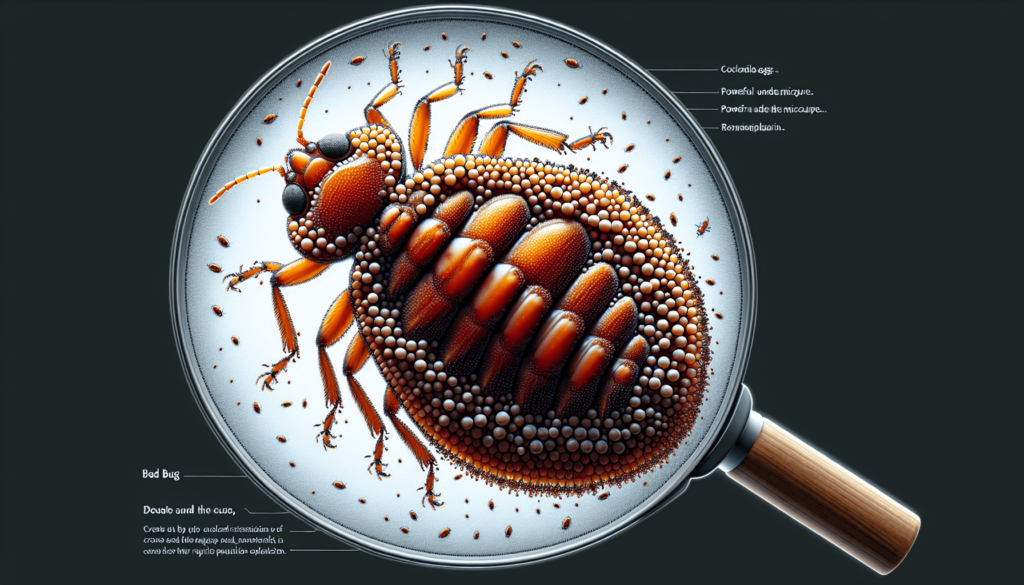
Growth Rate of Bed Bug Populations
Calculation of Bed Bug Population Growth
The growth rate of a bed bug population can be calculated by considering factors such as the number of female bed bugs, the number of eggs laid per female, and the survival rate of the eggs. By multiplying these factors together over a specific time period, it is possible to estimate the potential increase in population size.
Impact of Environmental Factors on Population Increase
Environmental factors play a significant role in the growth of bed bug populations. As mentioned earlier, temperature and humidity levels greatly influence the development and survival of bed bugs. Additionally, the availability of suitable hosts, such as humans or animals, is crucial for their reproduction and subsequent population increase.
Potential Maximum Population Given Ideal Conditions
Under ideal conditions, with access to abundant food sources and favorable environmental conditions, bed bug populations can grow rapidly. A single female bed bug, if left to reproduce without any intervention, has the potential to generate a population of over 5,000 bed bugs within six months. This emphasizes the importance of early detection and effective control measures to prevent infestations from reaching such high numbers.
Factors Impacting Bed Bug Multiplication
Role of Environmental Conditions
Environmental conditions play a crucial role in the multiplication of bed bugs. As previously mentioned, temperature and humidity levels are key factors that impact their development and reproduction. Bed bugs thrive in warm environments with high humidity, enabling them to reproduce at a faster rate.
Impact of Nutritional Access on Reproduction
The availability of a blood meal is essential for bed bug reproduction. Bed bugs require regular access to a host’s blood in order to lay eggs and develop. The availability of multiple hosts within an infested area can greatly contribute to the multiplication of bed bugs, as they can feed on different individuals and ensure a continuous blood supply for their survival and reproduction.
Effect of Available Hosts on Population Growth
The presence of suitable hosts, such as humans or animals, is a critical factor in the growth of bed bug populations. Bed bugs are opportunistic feeders and can infest a variety of environments, including homes, hotels, dormitories, and transportation vehicles. The more potential hosts there are within an infested area, the higher the chances of bed bugs multiplying and spreading.
Spread and Infestation
Typical Infestation Rates Based on Initial Bug Count
The rate of bed bug infestation can vary depending on several factors, including the initial number of bugs present. A small infestation may start with just a few bed bugs, but if left uncontrolled, the population can quickly multiply. It is estimated that a single female bed bug, if not eliminated, can lead to an infestation of hundreds or even thousands of bugs within a few months.
Rate of Spread in Multi-Unit Dwellings
In multi-unit dwellings, such as apartments or condominiums, the spread of bed bugs can be particularly challenging to control. Bed bugs can easily move between units through shared walls, electrical outlets, and even shared furniture or belongings. If one unit is infested, neighboring units are at a high risk of becoming infested as well, leading to a rapid spread within the building.
Indicators of High Multiplication and Infestation
There are several indicators that can point to a high multiplication and infestation of bed bugs. These include frequent sightings of live bugs or their shed exoskeletons, the presence of dark fecal spots on bedding or furniture, and the occurrence of multiple bites on individuals. Additionally, an unpleasant, musty odor may be present in heavily infested areas.
Public Health Impact
Physical and Mental Health Effects of Infestations
Bed bug infestations not only pose physical health risks but can also have a significant impact on individuals’ mental health and well-being. The bites from bed bugs can lead to skin irritations and allergic reactions, causing discomfort and distress. The presence of bed bugs can also cause anxiety, stress, and loss of sleep, impacting the overall quality of life for those affected.
Economic Impact of Bed Bug Infestations
Bed bug infestations can result in substantial economic costs. Infestations often require professional extermination services, which can be expensive. Additionally, individuals may need to replace infested furniture, bedding, and clothing, further adding to the financial burden. The presence of bed bugs can also lead to negative reviews and reputation damage for businesses in the hospitality industry.
Societal Response and Stigma Associated with Bed Bugs
Unfortunately, there is often a social stigma associated with bed bug infestations, leading to embarrassment and isolation for individuals experiencing the problem. Many people wrongly associate bed bugs with uncleanliness or poor hygiene, which can lead to discrimination and social exclusion. It is important to educate the public about the realities of bed bugs and address the stigma associated with infestations.
Prevention and Control Measures
Best Practices for Preventing Infestation
Preventing bed bug infestations is essential in maintaining a pest-free environment. Some best practices for preventing infestations include regularly inspecting bedding and furniture for signs of bed bugs, reducing clutter to limit hiding places, using protective mattress encasements, and being cautious when acquiring used furniture or clothing. Education about bed bugs and their behavior is also crucial in preventing infestations.
Effective Treatment and Control Methods
In cases of infestation, it is important to seek professional pest control services to effectively eliminate bed bugs. Treatment methods may include the application of insecticides, heat treatments, or a combination of both. Proper identification of the extent of the infestation is crucial for determining the most appropriate treatment approach. Non-chemical methods, such as vacuuming and steaming, can also be used to complement chemical treatments.
Importance of Early Detection in Limiting Multiplication
Early detection plays a vital role in limiting the multiplication and spread of bed bugs. Regular inspections and monitoring can help identify infestations in their early stages, making it easier to eliminate them before they become widespread. Early detection also allows for prompt treatment, reducing the likelihood of severe infestations and minimizing the associated health and economic impacts.
Common Myths about Bed Bug Multiplication
Clarifying Misconceptions about Rapid Multiplication
There are various myths and misconceptions surrounding bed bug multiplication that need to be addressed. One common myth is that bed bugs multiply at an incredibly fast rate, leading to large infestations overnight. In reality, bed bugs require time to develop and reproduce, and infestations typically occur over a longer period of time. Prompt action and prevention measures can help minimize the risk of rapid multiplication.
Understanding the Limitations of Bed Bug Reproduction
While bed bugs have the potential to reproduce quickly under favorable conditions, there are limitations to their reproduction. Factors such as access to a blood meal, suitable environmental conditions, and space for hiding and laying eggs can all impact their reproductive capabilities. Understanding these limitations can help in developing effective strategies for control and prevention.
Separating Fact from Fiction
It is important to separate fact from fiction when it comes to bed bug multiplication. Misinformation can lead to unnecessary fear and panic, as well as ineffective control measures. By relying on accurate and evidence-based information, individuals can make informed decisions and take appropriate actions to prevent and manage bed bug infestations.
Future Research and Innovations in Bed Bug Control
Advancements in Bed Bug Detection
Research efforts are underway to improve the detection and monitoring of bed bugs. Innovations such as canine scent detection, electronic bed bug monitors, and DNA analysis techniques are being explored to enhance the accuracy and efficiency of bed bug detection. These advancements can contribute to early detection and prompt intervention, ultimately reducing the impact of bed bug infestations.
Development of New Treatment Methods
Continuous research is being conducted to develop new and more effective treatment methods for bed bug control. This includes exploring alternative insecticides, heat treatment technologies, and integrated pest management approaches. The aim is to identify treatment methods that are safe, environmentally friendly, and capable of eliminating bed bugs at all life stages, including eggs.
Research Efforts Aimed at Reducing Bed Bug Multiplication
Researchers are also focused on studying the factors that influence bed bug multiplication and developing strategies to disrupt their reproductive capabilities. This includes investigating the impact of environmental conditions, host availability, and genetic traits on the breeding and fertility of bed bugs. By understanding these factors, researchers can potentially develop targeted interventions to limit bed bug multiplication.
In conclusion, understanding the life cycle, reproduction, and multiplication of bed bugs is crucial in managing and preventing infestations. By being knowledgeable about the biology and behavior of these pests, individuals can take proactive measures to minimize the risk of infestations and effectively control existing problems. Early detection, prompt treatment, and the implementation of preventive practices are key in mitigating the public health, economic, and societal impacts associated with bed bug infestations.
—
